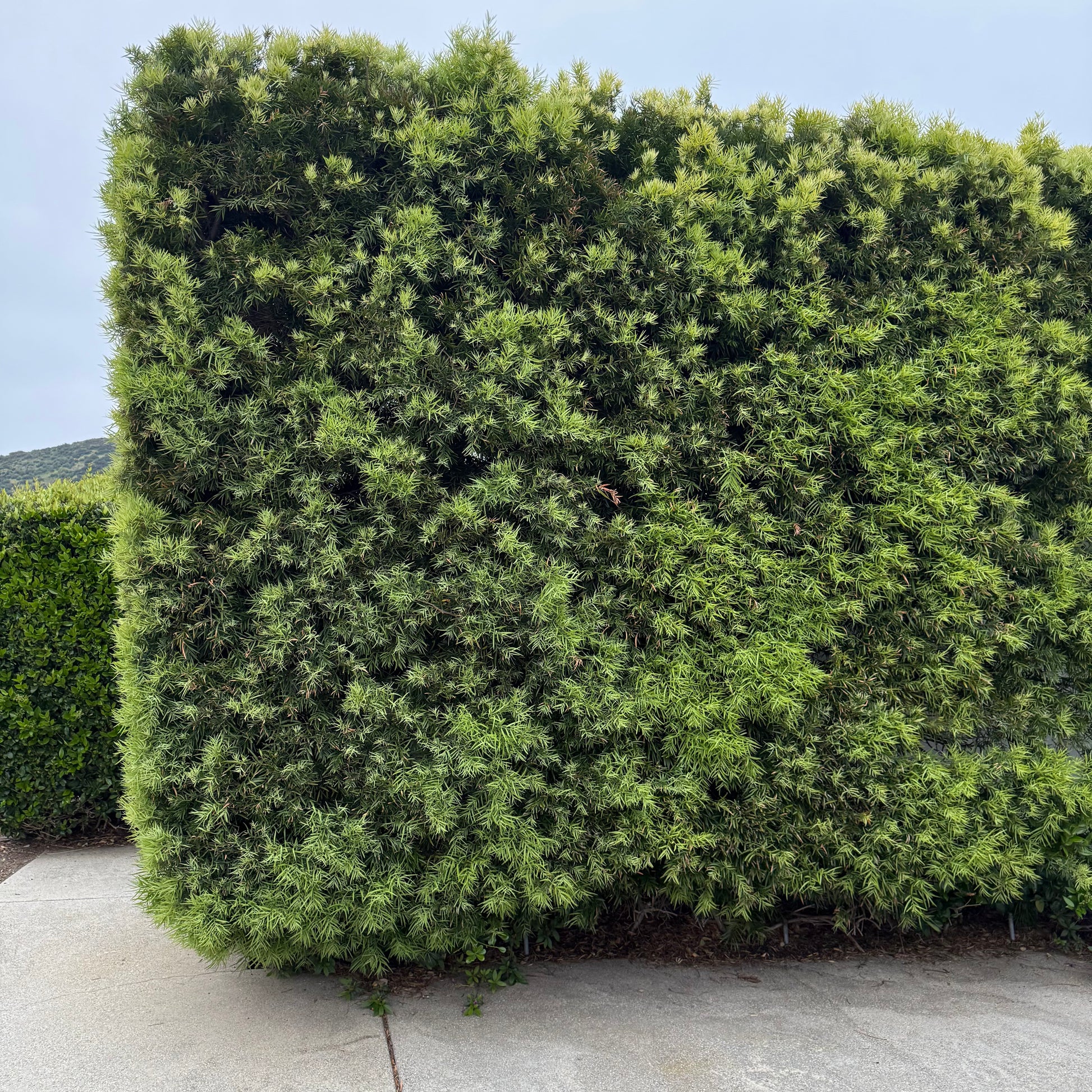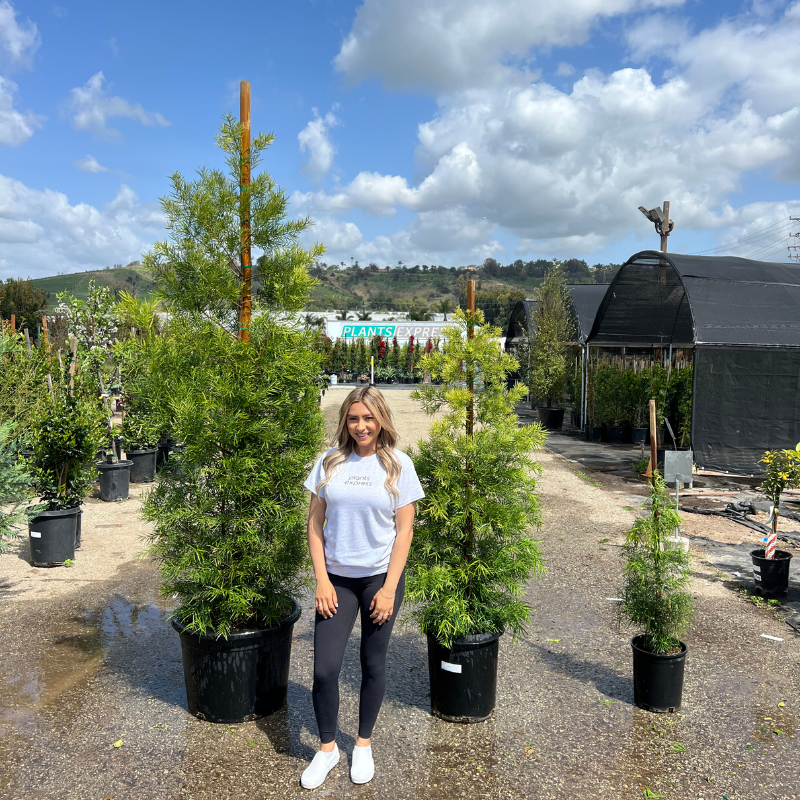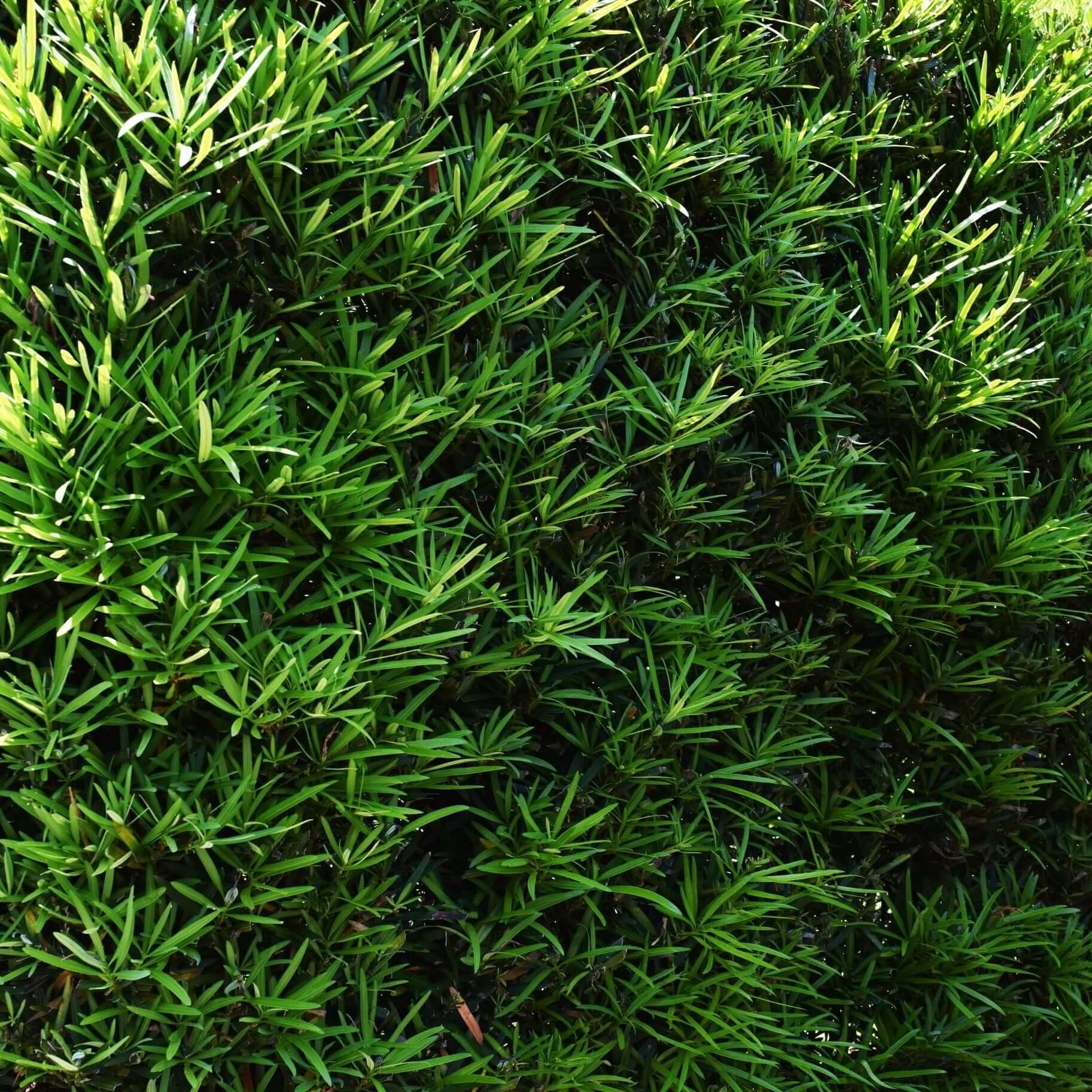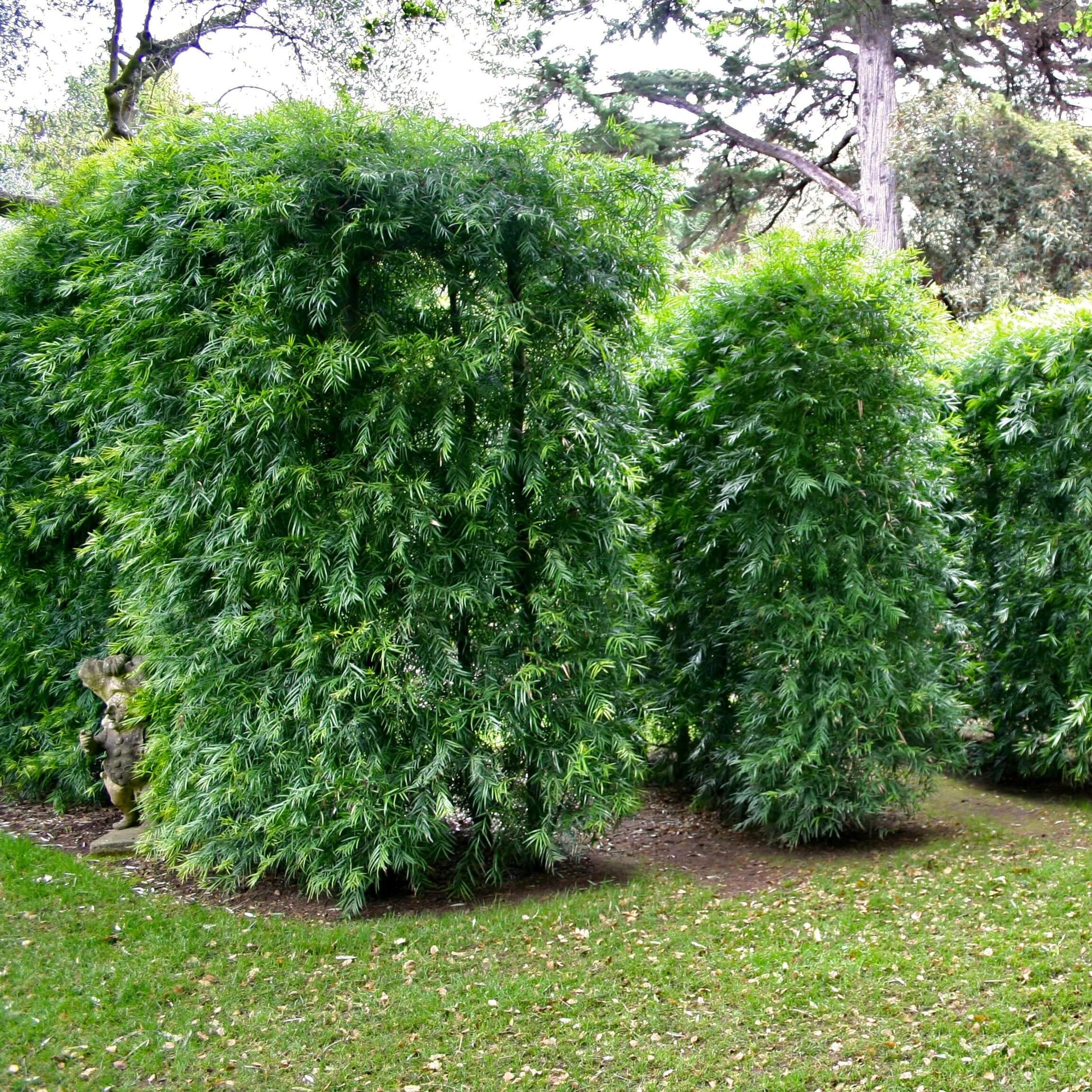
Podocarpus gracilior
Fern Pine
Delivery
24-hour money-back guarantee
Free delivery on orders over $349
Big Project? Call 888-444-1126 for bulk rates!
Why Podocarpus gracilior?
The Podocarpus gracilior (Fern Pine) has earned its reputation as California's most elegant privacy hedge for good reason. This exceptional evergreen creates a dense, feathery barrier with closely set narrow green leaves that transforms your outdoor space into a sophisticated private sanctuary. From the palatial estates of Palo Alto & Beverly Hills to Palm Springs weekend homes, this versatile hedge adorns the most prestigious properties across the state.
Podocarpus gracilior is ideal for both novice and advanced gardeners as it is low maintenance, drought tolerant, and easy to grow. It grows moderately fast, allowing you to quickly create a retreat in your yard or block out less desirable views. As a tree, Fern Pine can reach 50 feet, but as a column the size and shape can easily be maintained with pruning, making it perfect for small gardens or tight spaces.
Quick Planting Guide:
For instant privacy: Plant close enough that leaves almost touch for immediate dense coverage.
Center-to-center Spacing
Center-to-center spacing refers to the distance between the centers of two adjacent plants.


Varieties & Uses
The Podocarpus gracilior is incredibly versatile, with several popular applications:
- Privacy Hedges: Create living walls that block unwanted views and reduce noise
- Property Boundaries: Define your space with a beautiful natural border
- Windbreaks: Protect your property from strong winds and erosion
- Shade Trees: When allowed to grow as single specimens, they provide excellent shade and architectural structure
Why Choose Plants Express
- Professional Delivery: Our own fleet delivers directly to your door
-
Customer Support: Knowledgeable staff to answer all your questions
-
California Grown: Plants acclimated to local conditions for better success
- Guaranteed Quality: 24-hour money-back guarantee on all plants
How tall will my Podocarpus gracilior get?
Is Podocarpus good for planting against fences?
Does Podocarpus have invasive roots?
Can Podocarpus be used as a hedge or kept in column form?
40-50 ft.
20-40 ft.
Moderate
Perfect Your Landscape With Expert Help
Customize your yard with confidence. Schedule your free consultation today and bring your outdoor space to life!
Size Matters: Bigger Hedges, Instant Privacy
When it comes to creating your dream landscape, starting with the right foundation makes all the difference. A robust hedge plant doesn't just look better on day one; it establishes faster, withstands stress better, and creates the privacy and beauty you desire in a fraction of the time.









